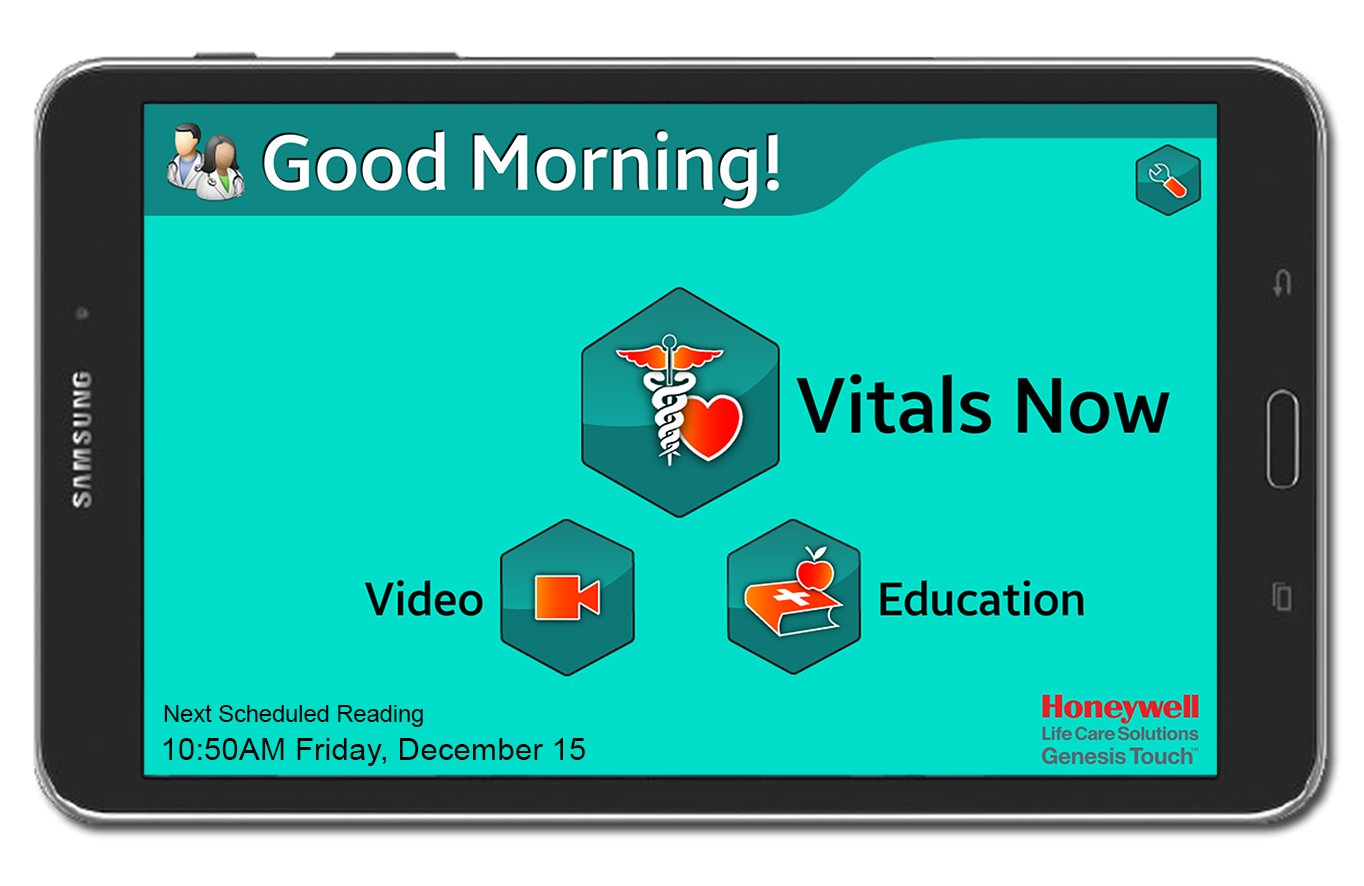Telehealth Services: An Effective Intervention in Reducing Rehospitalizations

At the start of the global health crisis in early 2020, health care providers across the country began implementing mitigation efforts to help slow community spread of the virus and limit exposure to patients and staff members. Telehealth and telemedicine soon became part of our everyday healthcare language, but many were left wondering exactly what these services entail and how they differ.
Telemedicine offers patients the opportunity to speak with their physician remotely, via an electronic interface such as a tablet or laptop, and essentially replaces the in-person physician-patient visit. Telehealth services, on the other hand, are designed to reinforce treatment plans once a patient has been discharged from the hospital setting and are receiving home health services. Concordia Visiting Nurses has been providing Telehealth services for close to two decades
Telehealth services are often provided to home health patients who suffer from a chronic or progressive disease, like heart failure or COPD. Upon hospital discharge, a telehealth monitor is placed into an eligible patient’s home within 24 hours by a trained telehealth installer. The installer provides the patient and their caregivers with a demonstration of the monitor, troubleshooting advice and other pertinent education to make things as easy as possible.
The monitors read the patient’s vitals daily and a report is transmitted back to the home health team who then compare the results to the patient’s established parameters. While the monitoring can be individualized, the fundamental functions of the monitors capture the following:
- Heart rate
- Blood pressure
- Oxygen saturation
- Weight
- Temperature
According to Concordia Visiting Nurses Chief Operating Officer Misty Ingram, telehealth monitoring is one significant intervention healthcare providers can utilize to help reduce rehospitalization.
“The patient’s physician establishes parameters based off of individual need and to create a baseline,” Ingram said. “This allows for the home health team to identify negative trends and collaborate with the physician to provide additional symptom management interventions in the home, in an effort to avoid rehospitalization.”
 Ingram continued, “During a reading, if a patient produces a blood pressure of 180 and their established blood pressure parameter is between 140-149, the monitor triggers an alert. The home health team is in immediate contact with this patient to rule out incidental spikes in blood pressure and to further assess. If the blood pressure is still elevated, the home health team works with the physician to determine if an in-person home health visit is needed or if more severe, if a doctor’s appointment or a call for emergency care is warranted.”
Ingram continued, “During a reading, if a patient produces a blood pressure of 180 and their established blood pressure parameter is between 140-149, the monitor triggers an alert. The home health team is in immediate contact with this patient to rule out incidental spikes in blood pressure and to further assess. If the blood pressure is still elevated, the home health team works with the physician to determine if an in-person home health visit is needed or if more severe, if a doctor’s appointment or a call for emergency care is warranted.”
In addition to capturing the aforementioned vitals, the monitor will also ask the patient a series of yes/no questions unique to their care. For example, a sign of worsening heart failure is excessive swelling in the ankles and feet, so for the heart failure patient, a daily question would likely be “Do you have more swelling in your legs today?”
The technology of telehealth monitoring continues to significantly advance each year and individuality remains a cornerstone of telehealth services. For some patients, due to safety concerns, telehealth services may not be appropriate and for other patients, varying aspects of the services can be adjusted to meet their unique needs.
“Telehealth monitors may not be a fit for all patients. Our clinical teams work with each patient to identify appropriate candidates for this service and will also make modifications when needed,” Ingram said. “For example, it may be unsafe for a patient to step onto a scale. For them, we can remove the scale but keep the other elements of the monitor intact.”
The benefits of telehealth services extend to the patient’s family members as well. The family is provided peace of mind that their loved one is being monitored on a daily basis by a home health clinician and that any abnormal readings are quickly addressed with the patient’s physician. The services also help to eliminate unnecessary trips to the physician’s office and reduce the amount of rehospitalizations that often accompany a chronic disease diagnosis.
If you or a loved one is living with a chronic or progressive disease and your doctor orders home health services, ask for Concordia Visiting Nurses and if telehealth services would be a good fit for your individual needs. For more information, call us at 1-877-352-6200 or contact us any time via our online contact form.
Get Updates From Concordia
There is always a LOT happening at Concordia! Would you like to stay up-to-date with our news and events? Sign up for our monthly e-newsletter here.